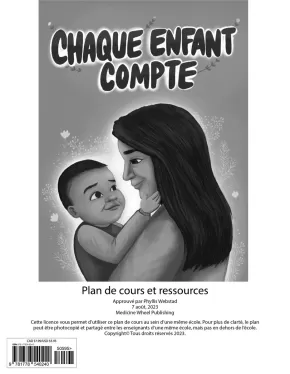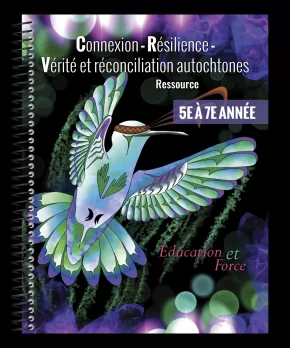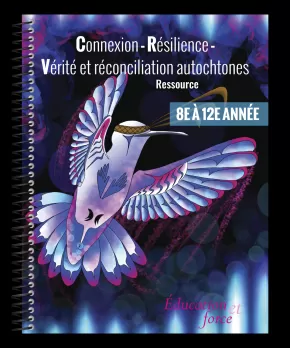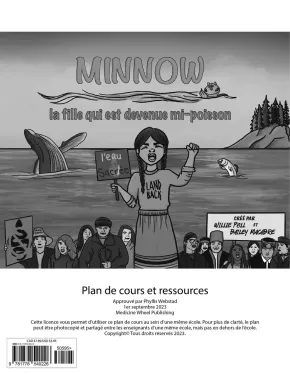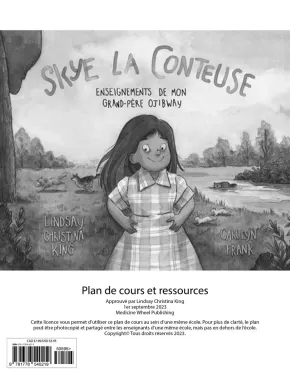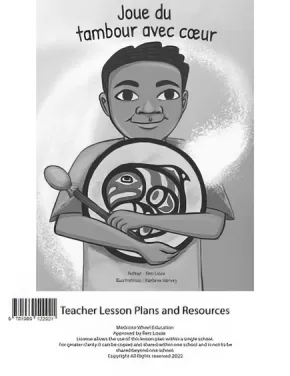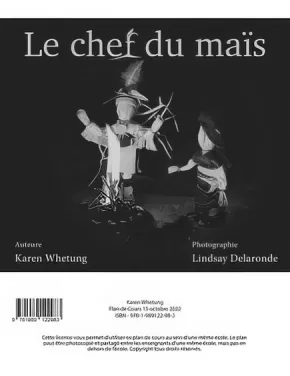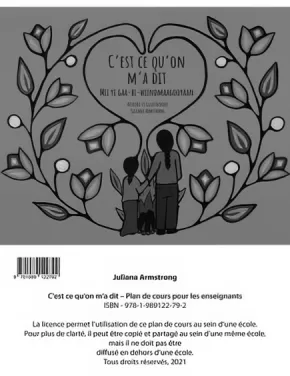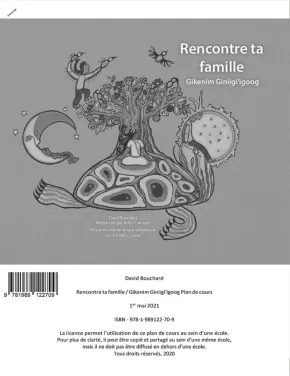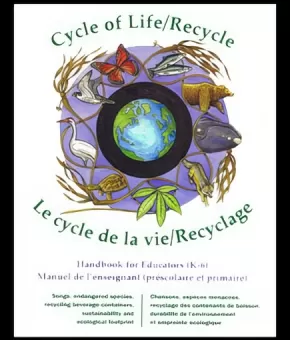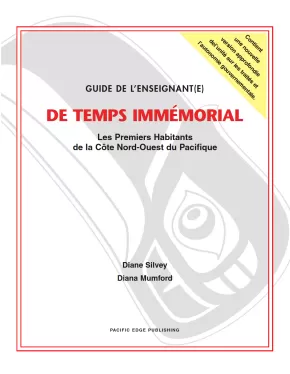
French Resources
1
-
15
of
15 Results;
Sort By
La rafle des années 1960: et enfance volée aux jeunes Autochtones
$45.00
Format:
Paperback
Text Content Territories:
Indigenous Canadian;
ISBN / Barcode: 9781459419902
Synopsis:
Synopsis:
The award-winning Righting Canada's Wrongs series is now available in French for Immersion classrooms!
Starting in 1951, Indigenous children in Canada were taken by social welfare agencies from their families and placed in the care of non-Indigenous families. These children grew up without their birth families, cultural roots, and language. Many tried to run away and some died in the attempt. The taking of the children is known as the Sixties Scoop, though the policies and practices started before the 1960s and lasted long after. Today, Indigenous children are shockingly over-represented in the child welfare system across Canada.
Indigenous communities organized and fought back for their children. In 1985, an official government report condemned the practice.
In the 1990s, lawsuits were filed against the governments who had supported taking the children. In 2018 and 2019, Alberta, Saskatchewan and Manitoba apologized for their roles. In 2020, the Canadian government agreed to a settlement for survivors of the Scoop.
Through hundreds of photos and primary documents, readers meet many survivors of the Scoop. They learn how Indigenous communities fought back to save their children and won, and how Indigenous communities across Canada are working towards healing today.
Reviews
“The Sixties Scoop and the Stolen Lives of Indigenous Children embraces complexity in the history it tells, which is further enhanced by the inclusion of first-hand accounts from survivors of the Scoop. Their stories provide a plurality of experiences, adding additional nuance to the book… It is timely and well-researched, an excellent resource for teachers, librarians, and parents interested in educating young people about the harms these policies had – and continue to have – on Indigenous communities, as well as the continued overrepresentation of Indigenous children in care.” — Quill & Quire
Educator & Series Information
This French book is part of the series Redresser les torts du Canada (Righting Canada's Wrongs series).
Recommended for ages 13 to 18.
This book is available in English: Righting Canada's Wrongs: The Sixties Scoop and the Stolen Lives of Indigenous Children
Additional Information
8.50" x 11.69" | 300 Photographs | Paperback
Réinstallation d'Inuit: Politiques et pratiques coloniales, résilience et résistance d'un peuple
$45.00
Format:
Paperback
Text Content Territories:
Indigenous Canadian; Inuit;
ISBN / Barcode: 9781459419926
Synopsis:
Synopsis:
The award-winning Righting Canada's Wrongs series is now available in French for Immersion classrooms.
In a highly visual and appealing format for young readers, this book explores the many forced relocation of Inuit families and communities in the Canadian Arctic from the 1950s to the 1990s. Governments promoted and forced relocation based on misinformation and racist attitudes. These actions changed Inuit lives forever. This book documents the Inuit experience and the resilience and strength they displayed in the face of these measures. Years afterwards, there have been multiple apologies by the Canadian government for its actions, and some measure of restitution for the harms caused.
Included in the book are accounts of a community forced to move to the High Arctic where they found themselves with little food and almost no shelter, of children suddenly taken away from their families and communities to be transported to hospitals for treatment for tuberculosis, and of the notorious slaughter by RCMP officers of hundreds of sled dogs in Arctic settlements.
Though apologies have been made, Inuit in northern Canada still face conditions of inadequate housing, schools that fail to teach their language, and epidemics of infectious diseases like TB. Yet still, the Inuit have achieved a measure of self-government, control over resource development, while they enrich cultural life through music, film, art and literature.
This book enables readers to understand the colonialism and racism that remain embedded in Canadian society today, and the successful resistance of Inuit to assimilation and loss of cultural identity.
Like other volumes in the Righting Canada’s Wrongs series, this book uses a variety of visuals, first-person accounts, short texts and extracts from documents to appeal to a wide range of young readers.
Educator & Series Information
This French book is part of the series Redresser les torts du Canada (Righting Canada's Wrongs series).
Recommended for ages 13 to 18.
This book is available in English: Righting Canada's Wrongs: Inuit Relocations: Colonial Policies and Practices, Inuit Resilience and Resistance.
Additional Information
8.50" x 11.69" | Paperback
La septième direction Plan de cours
$7.99
Artists:
Text Content Territories:
Indigenous American; Native American; Sioux; Lakota; Indigenous Canadian; First Nations; Sioux; Lakota;
ISBN / Barcode: 9781778540462
Synopsis:
Synopsis:
Un plan de lecon de l'enseignant pour approfondir le livre, La septième direction. Peut inclure des questions de compréhension, des activités de groupe, des amorces de conversation, des quiz, des activités d’arts du langage et des pages à colorier. Dans cette légende éclairante que nous raconte l’Aîné lakota Kevin Locke, Wak?á? T?á?ka (le Grand Esprit) a créé le monde entier en sept jours, gardant la création la plus précieuse pour la fin. Pour protéger cette précieuse création, Wak?á? T?á?ka devait la cacher dans un endroit où elle serait toujours en sécurité et a demandé à nos parents animaux de l’aider. Ensemble, ils ont trouvé l’endroit parfait. Quel endroit ont-ils choisi?
Educator Information
Recommended for use with students ages 7 to 10.
Find the student resource in French here: La septième direction: une légende de la création
This lesson plan is available in English: The Seventh Direction Teacher Lesson Plan.
Additional Information
25 pages | 8.15" x 9.53" | Paper Packet
Les pensionnats indiens: Effets dévastateurs sur les peuples autochtones du Canada et appels à l'action de la Commission de vérité et réconciliation
$45.00
Format:
Paperback
Text Content Territories:
Indigenous Canadian; First Nations; Inuit; Métis;
ISBN / Barcode: 9781459419667
Synopsis:
Synopsis:
The award-winning Righting Canada's Wrongs series is now available in French for Immersion classrooms.
Canada’s residential school system for Indigenous children is now recognized as a grievous historic wrong committed against First Nations, Métis and Inuit peoples. Through historical photographs, documents and first-person narratives from people who survived residential schools, this book offers an account of the injustice of this period in Canadian history. It documents how official racism was confronted and finally acknowledged.
In 1857, the Gradual Civilization Act was passed in Canada with the aim of assimilating Indigenous people. In 1879, Prime Minister Sir John A. Macdonald commissioned a report that led to residential schools across Canada. First Nations and Inuit children were taken from their families and sent to residential schools where they were dressed in uniforms, their hair was cut, they were forbidden to speak their native language and they were often subjected to physical and psychological abuse. The schools were run by churches and funded by the federal government.
The last federally funded residential school closed in 1996. The horrors that many children endured at residential schools did not go away. It took decades for people to speak out, but with the support of the Assembly of First Nations and Inuit organizations, former residential school students took the federal government and the churches to court.
Their cases led to the Indian Residential Schools Settlement Agreement, the largest class-action settlement in Canadian history. In 2008, Prime Minister Harper formally apologized to former native residential school students for the atrocities they suffered and the role the government played in setting up the school system. The agreement included the Truth and Reconciliation Commission, which has worked to document the experience. More than five years after the TRC Report was released, there have been reports of unmarked graves of children being discovered at the site of former residential schools. This updated edition includes some of those findings and examines what has and what still has to be done in regards to the TRC Report’s Calls to Action.
Educator & Series Information
This French book is part of the series Redresser les torts du Canada (Righting Canada's Wrongs series).
Recommended for ages 13 to 18.
This book is available in English: Righting Canada's Wrongs: Residential Schools: The Devastating Impact on Canada's Indigenous Peoples and the Truth and Reconciliation Commission's Findings and Calls for Action
Additional Information
8.50" x 11.69" | 300 Photographs | Paperback
Chaque enfant compte plan de cours (LP)
$7.99
Format:
Paperback
Text Content Territories:
Indigenous Canadian; First Nations; Salish; Interior Salish; Secwepemc (Shuswap); Stswecem'c Xgat'tem; Inuit; Métis;
ISBN / Barcode: 9781778540240
Synopsis:
Synopsis:
Un plan de lecon de l'enseignant pour approfondir le livre. Peut inclure des questions de comprehension, des activites de groupe, des amorces de conversation, des quiz, des activites d'arts du langage et des pages a colorier. Apprenez ce que veut dire la phrase « Chaque enfant compte ». Phyllis Webstad, la fondatrice de la Journee du chandail orange, presente un apercu de ce mouvement sincere. Chaque enfant compte honore l'histoire et la resilience des peuples autochtones sur l'Ile de la Tortue et nous permet de tous cheminer vers la verite et la reconciliation. Si vous etes un survivant des pensionnats ou un survivant intergenerationnel, vous comptez. Pour les enfants qui ne sont pas revenus a la maison, vous comptez. L'enfant en chacun de nous compte. Chaque enfant compte.
Educator Information
For ages 6 to 10.
Find the student resource here: Chaque enfant compte
This lesson plan is also available in English: Every Child Matters Teacher Lesson Plan
Additional Information
12 pages | 8.75" x 11.00" | Paper packet
Connexion - Résilience - Vérité et réconciliation autochtones Ressource - 5e à 7e année
$29.95
Artists:
Format:
Coil Bound
Text Content Territories:
Indigenous Canadian; First Nations; Inuit; Métis;
ISBN / Barcode: 978-1-990448-38-6
Synopsis:
Synopsis:
Ce livre est un recueil de parties de l’histoire des Peuples Autochtones du Canada et du processus de réconciliation.
Il est conçu pour éduquer tous les enfants et les jeunes - nos futurs dirigeants - sur l’histoire autochtone et les événements actuels. Il est destiné à mieux faire comprendre et à contribuer positivement à la réconciliation.
Ensemble, nous devons tenir compte du passé, du présent et de l’avenir dans nos efforts pour nous améliorer et améliorer les générations futures.
Ce livre offre une multitude d’articles et d’activités d’apprentissage de haute qualité, comprenant des unités et des leçons qui peuvent être utilisées par n’importe qui - enseignants, parents, étudiants, professionnels des affaires - qui peut avoir peu ou pas de connaissances ou de compréhension préalables des peuples ou des sujets autochtones.
Dans ce livre, vous rencontrerez de vrais Autochtones qui s’expriment et partagent leurs histoires et expériences directes, et vous entendrez clairement leur passion pour la réconciliation.
Ce livre est unique. Les histoires racontées dans ses couvertures sont uniques, tout comme chacun travaille à travers son propre voyage de compréhension et de faire sa petite part vers la réconciliation.
Educator Information
Recommended for grades 5 to 7.
A $5 per book discount is applied to a purchase of 10 or more books.
This workbook is available in English: Connecting – Resilience – Indigenous Truth & Reconciliation ‘CRITR’ Workbook: Grade 5 - 7
Additional Information
Spiral bound
Connexion - Résilience - Vérité et réconciliation autochtones Ressource - 8e à 12e année
$29.95
Artists:
Format:
Coil Bound
Text Content Territories:
Indigenous Canadian; First Nations; Inuit; Métis;
ISBN / Barcode: 978-1-990448-39-3
Synopsis:
Synopsis:
Ce livre est conçu pour éduquer tous les enfants et les jeunes - nos futurs dirigeants - sur l'histoire Autochtone et les événements actuels. Il est destiné à mieux faire comprendre et à contribuer positivement à la réconciliation.
Ensemble, nous devons tenir compte du passé, du présent et de l'avenir dans nos efforts pour nous améliorer et améliorer les générations futures.
Ce livre offre une multitude d'articles et d'activités d'apprentissage de haute qualité, comprenant des Unitéés et des leçons qui peuvent être utilisées par n'importe qui enseignants, parents, étudiants, professionnels des affaires qui peut avoir peu ou pas de connaissances ou de compréhension préalables des Peuples ou des sujets Autochtones.
Dans ce livre, vous rencontrerez de vrais Peuples Autochtones qui s'expriment et partagent leurs histoires et expériences directes, et vous entendrez clairement leur passion pour la réconciliation.
Ce livre est unique, les histoires racontées dans ses couvertures sont uniques, tout comme chacun travaille à travers son propre voyage de compréhension et de faire sa petite part vers la réconciliation.
Educator Information
Recommended for grades 8 to 12.
A $5 per book discount is applied to a purchase of 10 or more books.
This workbook is available in English: Connecting – Resilience – Indigenous Truth & Reconciliation ‘CRITR’ Workbook: Grade 8 - 12
Additional Information
Spiral bound
Minnow: la fille qui est devenue mi-poisson plan de cours (LP)
$7.99
Format:
Paperback
Text Content Territories:
Indigenous Canadian;
ISBN / Barcode: 9781778540226
Synopsis:
Synopsis:
Un plan de lecon de l'enseignant pour approfondir le livre. Minnow, une jeune autochtone, protectrice des eaux, entreprend un voyage sous l'eau ou elle en apprend de notre famille qui vit dans l'ocean. Quand elle retourne a la surface, elle rassemble sa communaute pour aider a apporter des changements. Cette histoire est racontee en rimes lyriques et aide les enfants a mieux respecter les gens qui protegent les eaux et les terres autochtones, l'environnement et le monde qui les entoure. Elle aide a faire decouvrir l'activisme aux enfants tot dans leur vie.
Educator Information
The student resource is available here: Minnow: la fille qui est devenue mi-poisson
This lesson plan is available in English: Minnow: The Girl Who Became Part Fish Teacher Lesson Plan
Additional Information
12 pages | 8.50" x 11.00" | Paper packet
Skye la conteuse: Enseignements de mon grand-pere ojibway plan de cours (LP)
$7.99
Artists:
Format:
Paperback
Text Content Territories:
Indigenous Canadian; First Nations; Anishinaabeg; Ojibway;
ISBN / Barcode: 9781778540219
Synopsis:
Synopsis:
Un plan de lecon de l'enseignant pour approfondir le livre. T'es-tu deja demande pourquoi Lapin a d'aussi longues oreilles? Ou pourquoi Raton laveur porte un masque? Dans ce recueil de nouvelles droles et uniques, la jeune Skye nous guide dans de nombreux enseignements autochtones, que son Grand-pere ojibway lui a transmis. Grace a son talent naturel de conteuse, Skye encourage les autres enfants a adopter cet art et a raconter des histoires a leur tour.
Educator Information
Recommended for ages 5 to 9.
Find the student resource here: Skye la conteuse: Enseignements de mon grand-pere ojibway
This lesson plan is available in English: Storyteller Skye: Teachings from My Ojibway Grandfather Teacher Lesson Plan
Additional Information
12 pages | 8.50" x 11.00" | Paper Packet
Joue du tambour avec coeur plan de cours (LP)
$7.99
Format:
Paperback
Text Content Territories:
Indigenous Canadian; First Nations; Nuu-chah-nulth (Nootka);
ISBN / Barcode: 9781989122921
Synopsis:
Synopsis:
Plan de cours de l'enseignant qui accompagne le livre Joue du tambour avec coeur. Quand sa mère lui donne un tambour fait à la main en cadeau, Ren apprend les enseignements du tambour qu’on lui transmet par le fait même. Il découvre que, grâce à ce tambour spécial, il peut créer des liens avec sa culture et reprendre confiance en sa voix pour partager avec joie les chansons traditionnelles de sa nation, la Nation Nuu-chah-nulth.
Educator Information
Find the student resource here: Joue du tambour avec coeur
This resource is available in English: Drum from the Heart Teacher Lesson Plan
Additional Information
14 pages | 8.50" x 11.00" | Paper Packet
Le chef du mais plan de cours (LP)
$7.95
Format:
Paperback
Text Content Territories:
Indigenous Canadian;
ISBN / Barcode: 9781989122983
Synopsis:
Synopsis:
Plan de cours de l'enseignant qui accompagne le livre Le chef du maïs. Le sage vieux chef devrait bientôt laisser sa place et la jeune Linny rêve d'être choisie pour le remplacer. Alors qu'elle a de la difficulté à passer le test, Linny apprend, de la façon la plus inattendue et avec l'aide de sa famille, ce qu'il faut vraiment pour devenir chef…
Educator Information
Find the French student resource here: Le chef du mais
This lesson plan is also available in English: The Corn Chief Teacher Lesson Plan
Additional Information
12 pages | 8.50" x 11.00" | Paper Packet
C'est ce qu'on m'a dit plan de cours (LP)
$7.99
Format:
Paperback
Text Content Territories:
Indigenous Canadian; First Nations; Anishinaabeg; Ojibway;
ISBN / Barcode: 9781989122792
Synopsis:
Synopsis:
Plan de leçon de l'enseignant qui accompagne le livre, C'est ce qu'on m'a dit, comprend les questions de compréhension, les activités de groupe, la recherche de mots est finalement les pages de couleurs, etc.
Educator Information
This resource is recommended for teaching ages 6 to 8.
The accompanying student resource for this work is available here: C'est ce qu'on m'a dit
This lesson plan is also available in English: This Is What I've Been Told Teacher Lesson Plan
Additional Information
12 pages | 8.50" x 11.00" | B&W Illustrations
Rencontre ta famille plan de cours (LP)
$7.99
Artists:
Format:
Paperback
Text Content Territories:
Indigenous Canadian; First Nations; Anishinaabeg; Ojibway;
ISBN / Barcode: 9781989122709
Synopsis:
Synopsis:
This Teacher Lesson Plan accompanies the book Rencontre ta famille. Includes comprehension questions, group activities, wordsearch, colouring pages etc. Mother Earth, we come from her, we go to her, without her we wouldn't be here, she gives all of us life and because of her we are all one family. In many segments of Indigenous life we speak of Mother Earth, Father Sky, Grandfather Sun, and Grandmother Moon. Meet Your Family is a rhythmic poem that will enlighten readers on how to view these important figures and share a greater concept of seeing the world as our natural family.
Rencontre ta famille is presented in both French and Ojibway. An additional softcover book written in Ojibway with a phonetics guide is included inside this hardcover book.
Educator Information
This is the teacher lesson plan for Rencontre ta famille.
This teacher lesson plan is also available in English: Meet Your Family Teacher Lesson Plan
Additional Information
12 pages | 8.50" x 11.00"
Le Cycle De La Vie/Recyclage Book w/CD
$65.95
Artists:
Format:
Coil Bound
Synopsis:
This French version (text and song lyrics) was translated by Quebec biologist Sylvain Archambeault. The songs were performed by children’s choirs in BC, Alberta and Quebec. We’ve had many comments from French teachers about the artistic excellence of the songs. Le cycle de la vie/Recyclage fills a gaping need for quality, new songs and science education materials for use in French immersion schools. See English description for more details.
Guide de la'enseignant(e) De Temps Immemorial (4 in Stock, in Reprint)
$59.95
Format:
Paperback
ISBN / Barcode: 1894948068
Synopsis:
Synopsis:
From Time Immemorial provides an honest and up-to-date survey of the history of the coastal First Nations from pre-contact to the present. The culture of the coastal people was highly complex. Although there were many similarities, there were also many differences among the groups who shared the wealth of their life-sustaining environment.
This book provides a broad overview of traditional ways common to a large number of diverse groups. It encourages readers to learn more about particular groups who, long ago, walked the shorelines and forest trails of the Pacific Northwest.
The Teacher's Guide provides support materials to meet 100% of the prescribed learning outcomes of the Grade Four Social Studies curriculum in BC with links to Social Studies IRP grade four learning outcomes and the Shared Learnings document. It contains detailed lesson plans, reproducible blackline masters, assessment strategies and tools and activities integrating theme across the curriculum (Science, Math, Art and Language Arts).
Educator Information
Table of Contents
Part One
Using the Student Text
Using the Teacher’s Guide
Your Social Studies Unit
Prescribed Learning Outcomes Charts
Setting the Stage
Part Two
From Time Immemorial
Chapter 1: Living Together: Villages and Families
Chapter 2: Living in Balance With the Sea: Fishing
Chapter 3: Living in Balance with the Land: Hunting and Gathering
Chapter 4: At Home by the Forest: Shelter and Clothing
Chapter 5: Travel in the Pacific Northwest: By Land, By Sea
Chapter 6: Living with the Spirits: Ceremonies and Beliefs
Chapter 7: Expressing a Culture: Art, Drama, Music and Games
Chapter 8: Living with Other Nations: Trade and Warfare
Chapter 9: Contact with Strangers: Explorers and Traders
Chapter 10: Living with the Newcomers: A Way of Life Ends
Chapter 11: Losing Rights and Freedoms: Legislation and Discrimination
Part Three
Appendix A: Blackline Masters
Appendix B: Assessment/Evaluation Tools
Appendix C: Annotated Related Resource List
Appendix D: Universal Declaration of Human Rights and First Nations RightsInfractions
Appendix E: The National Aboriginal Achievement Awards
Find the student resource that pairs with the Teacher's Guide here: De Temps Immemorial: Les Premiers Habitants de la Côte Nord-Ouest du Pacifique
This Teacher's Guide and the student resource are also available in English:
Sort By







